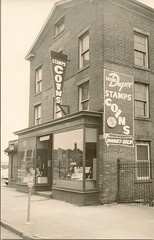
About UsThe Numismatic Bibliomania Society is a non-profit organization promoting numismatic literature. For more information please see our web site at coinbooks.org SubscriptionsThose wishing to become new E-Sylum subscribers (or wishing to Unsubscribe) can go to the following web page link MembershipThere is a membership application available on the web site Membership Application To join, print the application and return it with your check to the address printed on the application. Membership is only $15 to addresses in the U.S., $20 for First Class mail, and $25 elsewhere. For those without web access, write to: David M. Sundman, Secretary/TreasurerNumismatic Bibliomania
Society AsylumFor Asylum mailing address changes and other membership questions, contact David at this email address: dsundman@LittletonCoin.com SubmissionsTo submit items for publication in The E-Sylum, just Reply to this message, or write to the Editor at this address: whomren@coinlibrary.com
BUY THE BOOK BEFORE THE COINYou won't regret it! |
- WAYNE'S WORDS: THE E-SYLUM APRIL 11, 2010
- COMMENTS ON THE NEW NBS BIBLIOGRAPHY
- COVER IMAGE: THE MEXICAN REPUBLIC ONE CENTAVO, 1841-1905
- R.W. JULIAN ON THE MODEL FOR DRAPED BUST COINAGE
- MORE ON COIN DEALER FRANK DUPEE
- MORE ON A REVIEW OF NUMISMATICS AND THE LAW
- QUERY: IMAGES OF COIN EDGES AND MINTMARKS SOUGHT
- MORE ON THE PIRATED VERSION OF THE STEN WORLD PAPER MONEY CATALOGUE
- THE EMERGENCY MONEY COLLECTOR, VOL. 2 NO. 1
- NUMISMATIC VOCABULARY: DOUBLE DIE
- QUERY: JOURNAL OF THE EMERGENCY MONEY SOCIETY
- NOTES FROM E-SYLUM READERS APRIL 11, 2010
- THE MARYLAND NUMISMATIST SPRING 2010
- THE IPAD AND THE NUMISMATIST
- WASHINGTON'S LETTER REGARDING STONEY POINT GOLD MEDAL
- 1975 STACK'S EXTORTIONIST TURNS HIMSELF IN
- ROBERT RHUE'S RAMBLINGS ON THE HOBBY IN THE 1960S
- THOUGHTS ON THE ANA CONVENTION CITY PLAN
- BALDWINS TO OFFER STRICKLAND NEVILLE ROLFE COLLECTION
- THE EDDYSTONE MEDAL
- SRI LANKA REPLACING TEN-RUPEE BANKNOTE WITH COINS
- THE COIN-THROWING POLTERGEIST
- FEATURED WEB SITE: COLCHESTER TREASURE HUNTING
WAYNE'S WORDS: THE E-SYLUM APRIL 11, 2010

Among our new subscribers this week are David Meadows, courtesy of Arthur Shippee, Jacob S. Craig III, Ph.D., courtesy of Harold Levi, and Quentin Burrows. Welcome aboard! We now have 1,332 subscribers.
Sorry for the late publication - we had another hiccup on the Binhost servers last night. On the plus side, the delay enabled the inclusion of some great images forwarded by Caroline Newton of Baldwin's in London.
We're a little short on book announcements and reviews this week, but we've had so many lately I won't feel bad. But next week would be a great time to submit reviews you may have been working on or thinking about (hint, hint...)
Topics this week include a number of responses to earlier items, queries regarding mintmark and edge images and the journal of the Emergency Money Society. To learn about the Eddystone medal and the coin-throwing poltergeist, read on. Have a great week, everyone!
Wayne Homren
Numismatic Bibliomania Society
COMMENTS ON THE NEW NBS BIBLIOGRAPHY
Roger Burdette writes:
The new NBS bibliography listings look excellent - a clean, clear design with no clutter.
George Kolbe writes:
Seems like a good effort.
Len Augsburger writes:
This Wiki is really neat. I had given some thought to creating a "100 Greatest" book with illustrations and prices, but I can see that the collective wiki effort will quickly supercede that. Interesting times, these.
Dave Lange writes:
To read the earlier E-Sylum article, see: NBS WEB SITE UPDATE: A BIBLIOPHILE'S BIBLIOGRAPHY (www.coinbooks.org/esylum_v13n14a02.html)
COVER IMAGE: THE MEXICAN REPUBLIC ONE CENTAVO, 1841-1905
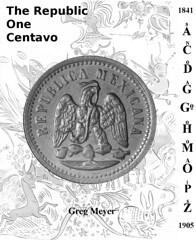 I am putting the last wee bit of polish on a three year odyssey to document the one centavo series of the Mexican Republic, 1841-1905. I go into the history of the series beginning with the first patterns made to the vagaries of revolt, drought and disease on the various mint productions across the country. The book, The One Centavo of the Mexican Republic, will be available at the end of this April.
I am putting the last wee bit of polish on a three year odyssey to document the one centavo series of the Mexican Republic, 1841-1905. I go into the history of the series beginning with the first patterns made to the vagaries of revolt, drought and disease on the various mint productions across the country. The book, The One Centavo of the Mexican Republic, will be available at the end of this April.
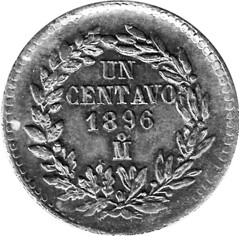 It is 186 pages with black and white photos. All Dates and Mints are documented and only one Date/Mint is missing a picture from the series, the 1875 Alamos centavo which only survives as a single piece in the Bank of Mexico Museum. Collections from across the country and Mexico were visited and studied. A wide literature search of both articles and catalogs going back to the 1870's were examined and referenced by footnotes. A bibliography of referenced works is included as well as historiographic works and primary sources such as relevant decrees, laws and contemporary newspaper articles.
It is 186 pages with black and white photos. All Dates and Mints are documented and only one Date/Mint is missing a picture from the series, the 1875 Alamos centavo which only survives as a single piece in the Bank of Mexico Museum. Collections from across the country and Mexico were visited and studied. A wide literature search of both articles and catalogs going back to the 1870's were examined and referenced by footnotes. A bibliography of referenced works is included as well as historiographic works and primary sources such as relevant decrees, laws and contemporary newspaper articles.
To read the earlier E-Sylum article, see: NEW BOOK: THE MEXICAN REPUBLIC ONE CENTAVO, 1841-1905 (www.coinbooks.org/esylum_v13n14a04.html)
THE BOOK BAZARRE
R.W. JULIAN ON THE MODEL FOR DRAPED BUST COINAGE
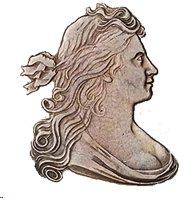 In the April 4, 2010, issue of the E-Sylum Karl Moulton has the following to say about the genesis of the Draped Bust dollar coinage in the late summer of 1795:
In the April 4, 2010, issue of the E-Sylum Karl Moulton has the following to say about the genesis of the Draped Bust dollar coinage in the late summer of 1795:
This wonderful portrait done by Stuart was in all probability the contemporary image used by assistant engraver John Eckstein for the "two models for dollars", with Anne Bingham's features (BB-51 and BB-52) that he prepared the dies (probably including the small eagle motif seen on the reverse), for which he was paid $30 on September 9, 1795, by Mint Director Henry DeSaussure.
There are some problems with this paragraph, as follows:
1) John Eckstein was never an engraver, assistant or otherwise, at the United States Mint.
2) Eckstein did not engrave any dies for United States coinage.
3) The “models” made by Eckstein in September 1795 were actually plaster models for the use of Robert Scot, who did engrave the hubs and dies for this coinage. The use of plasters by engravers was common in the 18th and 19th centuries.
4) Because the Willing family were prominent Federalists, the chances of Anne Willing Bingham's portrait having been used for the coinage are slight at best. President Washington was under attack from the anti-Federalists and the use of a recognizable portrait on the coinage would have caused him additional political problems.
To read the earlier E-Sylum article, see: MORE ON THE MODEL FOR DRAPED BUST COINAGE (www.coinbooks.org/esylum_v13n14a12.html)
MORE ON COIN DEALER FRANK DUPEE
My guess is Boston. I think I saw that building (with the faded wall sign still visible) in the North End last summer.
Can anyone confirm a Boston-area address for Dupee?
To read the earlier E-Sylum article, see: QUERY: FRANK DUPEE STAMPS AND COINS (www.coinbooks.org/esylum_v13n14a09.html)
MORE ON A REVIEW OF NUMISMATICS AND THE LAW
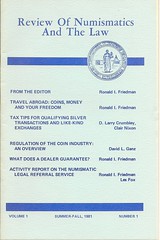 Last week I asked if anyone was aware of an early 1980s publication called
"Review of Numismatics and the Law", which was later renamed to "The Counsellor". David Ganz had an article in the first issue, but didn't know about the name change. He writes:
Last week I asked if anyone was aware of an early 1980s publication called
"Review of Numismatics and the Law", which was later renamed to "The Counsellor". David Ganz had an article in the first issue, but didn't know about the name change. He writes:
It is defunct. It was quite problematical. We all had different thoughts as to what it was meant to do.
Michael E. Marotta was quite intrigued and asked,
How can I read them, short of driving to your house?
Although I generally don't lend items from my numismatic library, I made Mike the same offer I made Warner Talso when I sent him my issues of The Emergency Money Collector. If he writes about them, we'll publish his text here for E-Sylum readers. I shipped them off to Mike's Michigan address on Tuesday.
To read the earlier E-Sylum article, see: QUERY: REVIEW OF NUMISMATICS AND THE LAW (www.coinbooks.org/esylum_v13n14a11.html)
QUERY: IMAGES OF COIN EDGES AND MINTMARKS SOUGHT
I'm preparing for a presentation on April 24th to a group of young numismatists at the Dulles Expo Center coin show in Chantilly, VA. I built some slides for a "Collecting 101" presentation where I'll define some basic numismatic terms including mintmarks. I also discuss the "third side" of the coin, the edge.
Perhaps one of you can help. I'm looking for images of the following: closeups of U.S. coin mintmarks (P, D, S, O, C, CC, etc) and a couple lettered edges, such as the 1793-1795 cent “ONE HUNDRED FOR A DOLLAR” or the Bust Half Dollar, 1807-1836, “FIFTY CENTS OR HALF A DOLLAR”
THE BOOK BAZARRE
MORE ON THE PIRATED VERSION OF THE STEN WORLD PAPER MONEY CATALOGUE
Ian A. Marshall writes:
Regarding the ongoing discussions of Ward Smith and his publishing ventures, I remember a long discussion with him around the 1983 ANA in San Diego, where we shared a room, about the pirated version of the Sten World Paper Money Catalogue. It was the first two volumes combined in one, with the same style grey cover as the original, but the printing quality is much lower as it is simply a copy of the original.
The pirating job was done by a well known Canadian dealer and publisher (now deceased) who had, at the time, a major interest in the topic. I believe it was more or less contemporary to the original publication and Ward was still extremely upset at that time (1983) but seemed to have neither the financial strength nor the push to pursue the matter in the courts.
I do have copies of both the originals and the pirated versions should anyone be interested and can, at some point supply a scan (I am presently travelling in Europe).
Neil Shafer forwarded images of the other pioneering world paper money books we discussed. Thanks! -Editor
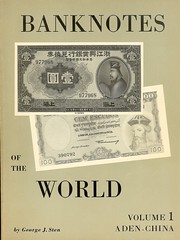
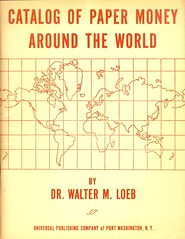
Neil writes:
 George Sten's Encyclopedia of World Paper Money is full of great research - George was a real pioneer in this field.
George Sten's Encyclopedia of World Paper Money is full of great research - George was a real pioneer in this field.
Tom Sheehan writes:
I have a copy of the 1961 Loeb book and Vols 1 & 2 of Sten's Bank Notes of the World. Both of them came from Loeb's estate. I was also in on the tail end of the liquidation of the Loeb estate. If only I had the knowledge and resources I have now then......
To read the earlier E-Sylum article, see: MORE ON WARD SMITH'S PAPER MONEY PUBLICATIONS (www.coinbooks.org/esylum_v13n14a13.html)
THE EMERGENCY MONEY COLLECTOR, VOL. 2 NO. 1
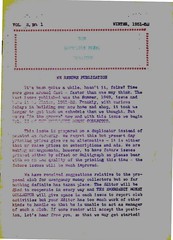 “We Resume Publication”. So states Arlie after a hiatus. This issue (and future issues) is printed by “duplicator” machine. At this date it is faded and hard to read. Arlie notes the high cost of printing for this change. The magazine is now up to 20 pages.
“We Resume Publication”. So states Arlie after a hiatus. This issue (and future issues) is printed by “duplicator” machine. At this date it is faded and hard to read. Arlie notes the high cost of printing for this change. The magazine is now up to 20 pages.
Arlie reports that efforts to create a Club are still in progress. It seems that despite his optimism and suggestions from readers, it has not come to fruition. The hold up is finding someone to manage/lead the Club. Arlie feels too busy to take on the task himself.
Josef Ulm of Austria and M. Ouahkoff of France want to change the name of The Emergency Money Collector. They also think the magazine should deal with paper money only. Arlie does not agree, but asks for opinions. (It seems there is always someone on the sidelines who has suggestions to improve a product, but won't get involved.)
In the last issue Arlie noted that O.P. Eklund of Spokane, Wash. was ill. Since that writing he has passed on. Mr. Eklund was a well-known collector of minor foreign coins. He had a collection of over 30,000 books and 40,000 coins. His collections were sold to Mrs. D. Dee DeNise of Seattle, Wash. Arlie regrets that the collection will probably be broken up, but that will give many collectors a chance to own some of these coins. And is this not better than to have the collection hidden away in a museum (A variation of an on-going argument we have all heard.)
Chapter III of “Russian Emergency Paper Money” by Wladimer M Oushkoff is presented. This Chapter starts by dividing Russia into regions for discussion purposes. This suggests how vast the Russian landmass is. Can you image instituting a currency policy, after the Civil War (preferred term), on an area this size. The first four regions to be presented are:
North Russia was the stronghold of the White Russian government. In 1918, the government made a deal with the British government to back the currency with pounds sterling. Notes were printed by Waterloo & Sons, LTD, London.
Northwest Russia was noted for local issues starting in 1918. Many were associated with a strong Jewish community.
Baltic Region includes Estonia, Latvia, and Lithuania. The White government issued currency in Marks, probably as a holdover the German occupation (up to 1916).
Ukraine & West Ukraine. Ukraine declared it's independence in 1915. There were two historical units of currency: Karbovanatz (given that name for the rouble in that province) and Grivna.(given that name for the Austrian crown because Austrian Galicia joined the Russian Ukraine on a federation basis).
“Paper Money of the Spanish Civil War” by Andra L. Helfar, is the other article. This article refers to a similar article in the previous issue and a list Arlie provided previous to that. Arlie opines that between these three lists, one may have a reasonably complete of emergency notes from the Spanish Civil War. (Wait a minute – last issue he said in the province of Catalonia, alone, there were over 700 communities that produced their own notes. These combined lists don't seem long enough.)
W.E. Daniels, 4736 45th Avenue N.E., Seattle 5, Wash. wants to buy or trade WWII emergency or military notes or Philippine Guerrilla notes. (I mention the complete address because I know the area well. It is next to the University District.) Theodore Kemm of New York City is selling “U.S. Invasion Currency”. He offers $1 Hawaii overprinted notes for $1.50 and $1 Africa Yellow Seal notes for $1.50. A set of “Africa Invasion Notes” ($1, $5, and $10) is $19.00.
This is the fifth issue of this magazine. Only two more to go.
To read the earlier E-Sylum article, see: THE EMERGENCY MONEY COLLECTOR, VOL. 1 NO. 4 (www.coinbooks.org/esylum_v13n13a17.html)
NUMISMATIC VOCABULARY: DOUBLE DIE
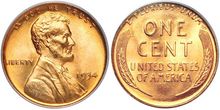
Numismatic glossaries appeal to me. I search each new numismatic book for such a glossary. Then search these glossaries to see that I have all the technical terms in the field covered in my Encyclopedia of Coin and Medal Technology. It is one way I learn of the terms currently in use.
The best of all these glossaries is found in Walter Breen's Complete Encyclopedia of U.S. and Colonial Coins. The glossary contains 582 terms – the most authoritative in the field! – it is found on pages 695-711.
Within the last decade some of these glossaries have been appearing on the Internet. Six years ago in August 2004 I discovered one I thought was particularly useful. It was on the web site of the Johnson City Coin Shop. What a great service to collectors and their customers to offer this, I thought.
JC-Coin Shop's web site listed 742 terms and I delighted in perusing each one. About 200 of these were good technical terms I had in my Encyclopedia. Another hundred were names of coins, mints, people, or organizations. A small percentage (about 10 percent) was condition terms or abbreviations. What was left (43 percent) was numismatic jargon. Such terms are what you hear at coin shows, coin clubs, in conversations among collectors and dealers. Not necessarily precise terms but what we all use in our field.
Terms like "bag toning," "deep cameo," "full steps," "monster" coin are all numismatic jargon. With any time in the field collectors know -- or quickly surmise -- what these terms mean. I was surprised there were so many. What the good folks at JC-CS had also listed were a lot of terms called "slang" as well. They used the word slang to excess I thought. Describing a coin "Canadian" as a coin from Canada is not slang.
Then I found more numismatic glossaries on the web. Another was on the PCGS web site. It was similar to JC-CS's. One must have borrowed from the other.
In comparing the two I found one blatant difference. JC-CS had 19 lines to describe "double die." It was lengthy -- the longest on the list -- and absolutely impossible to understand. It seemed to keep repeating itself. In an attempt to make some sense I copied it to a blank page and separated each sentence.
I numbered each sentence: 1 - 2 - 3 - 4 - 5 - 6 - that last sentence was incomplete - then the same repeated sentences 1 - 2 - 3 - then it started over again 2 - 3 - 4 - 5 - 6.
On August 15, 2004 I sent them an email describing some inaccuracies in that definition and its jumbled nature. At the beginning of sentence 2 "before the introduction of hubbing" bothered me. I pointed out the ancients had used hubbing in the making of their dies, so hubbing was not recently "introduced." I added parenthetically: “A new type hydraulic press was installed at the Philadelphia Mint in 1892 so perhaps the errors they were describing had occurred since then.”
To be helpful I rewrote that double die entry and included it in my email:
A die which has been impressed with a hub more than once with a shifting before the last hub impression. This shifting causes some elements to have two images. Coins struck from such malformed dies exhibit these multiple images, the most famous being the 1955 Double Die Lincoln cent. PCGS uses "double die" as the designation for this hubbing error.
That was six years ago. This week I went to their web site again. That jumbled definition of double die is still there! Go see for yourself -- click on this link and scroll down to “double die.”: jc-coin.com/jccoin/glossary/index.cfm?id=d
They hadn't changed it! They either didn't get my email, thought I was a crank, or didn't care! I hope not the later.
They had a good service to collectors. Too bad it is spoiled by one bad definition.
QUERY: JOURNAL OF THE EMERGENCY MONEY SOCIETY
Philip Mernick of London writes:
Reading the item about The Emergency Money Collector reminded me that I once subscribed to JEMS, the Journal of the Emergency Money Society. I think Dick Upton was the editor. It was absorbed into Numismatics International (NI) and I still retain my membership. Can anyone tell me anything about JEMS?
To read the earlier E-Sylum article, see: THE EMERGENCY MONEY COLLECTOR, VOL. 1 NO. 4 (www.coinbooks.org/esylum_v13n13a17.html)
NOTES FROM E-SYLUM READERS APRIL 11, 2010
Nick Graver was curious about whether the car dealer who advertised in Coin World offering a Pontiac in exchange for coins was ever taken up on the offer. Dick Johnson writes:
I don't know if he obtained any small date cents -- rolls or bags -- from this ad. As Beth Deisher mentioned in her article his was not the highest offer in that issue and it was a very competitive time for buyers.
Fred Schwan writes:
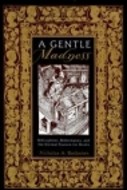 A Gentle Madness is a great book. You likely have no argument there. Now, for the controversial part. In my opinion it IS a numismatic book. How is that, you say? The book describes the collecting sickness or genetic trait. I am afflicted. I see myself in the book. On top of that we have a problem with numismatic books!
A Gentle Madness is a great book. You likely have no argument there. Now, for the controversial part. In my opinion it IS a numismatic book. How is that, you say? The book describes the collecting sickness or genetic trait. I am afflicted. I see myself in the book. On top of that we have a problem with numismatic books!
To read the earlier E-Sylum article, see: LECTURE BY AUTHOR OF "A GENTLE MADNESS" (www.coinbooks.org/esylum_v13n14a16.html)
THE MARYLAND NUMISMATIST SPRING 2010
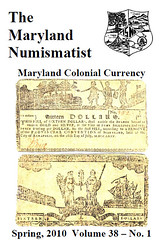 Recently our Featured Web Site was a presentation by Scott Barman on "Maryland Colonial and State Currency". I learned that an expanded version of the presentation was published in the Spring 2010 issue of
The Maryland Numismatist. Editor Simcha Kuritzky kindly sent me an electronic copy.
Recently our Featured Web Site was a presentation by Scott Barman on "Maryland Colonial and State Currency". I learned that an expanded version of the presentation was published in the Spring 2010 issue of
The Maryland Numismatist. Editor Simcha Kuritzky kindly sent me an electronic copy.
Another interesting article in the issue was written by Simcha. It's part five of "What's Your Sign? (Zodiac themed medals)".
THE IPAD AND THE NUMISMATIST
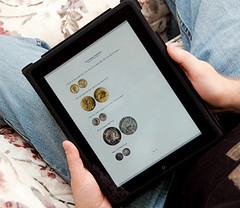 Unless you've been on a trek to a remote section of the planet you've likely seen the announcement of Apple's most recent product, the iPad. Much larger than an iPod or other portable phone/ data device but slightly smaller than a typical laptop computer or netbook, the iPad is a computer tablet. Tablets of course are not a new concept, but Apple has blended power, portability, and elegance into the design of this device. As an advocate of digital data access, I followed the pre-launch announcements and wondered if this might be a computer useful for numismatics.
Unless you've been on a trek to a remote section of the planet you've likely seen the announcement of Apple's most recent product, the iPad. Much larger than an iPod or other portable phone/ data device but slightly smaller than a typical laptop computer or netbook, the iPad is a computer tablet. Tablets of course are not a new concept, but Apple has blended power, portability, and elegance into the design of this device. As an advocate of digital data access, I followed the pre-launch announcements and wondered if this might be a computer useful for numismatics.
So, when my son, an IT professional, told me he had preordered an iPad and asked if I wanted to go with him to the Apple Store to pick it up on the first day of sales, I readily agreed. The nearest Apple Store is a 45-minute drive from home; which was followed by a 45-minute wait in line at the mall. There were two lines actually, one for those who had reserved an iPad and the other for those who were willing to gamble that there would still be iPads in stock when their turn came at the head of the line.
My primary interests were how usable the iPad might be for reading documents, particularly those concerned with numismatics. I prefer digital documents when portability is an issue. Why carry notebooks, catalogs, file folders, etc. if you can have the same data in digital format? The answer of course is that not all the documents I want are available digitally, nor is software for digital access always the most user-friendly. For the latter reason I'm also a big fan of the PDF file format, so I did a test to see how easy it would be to read documents on the iPad.
I'm happy to say that the results were incredible: pages clearly displayed and easily read, whether from scans or files, and simple protocols for page turning. My samples included a few scanned pages of Q. David Bowers A Guide Book of United States Commemorative Coins, a book approximately 4" x 6"; a Word file of a fantasy coin collection in letter-size format, with full-color images; and a Word file of my current numismatic book list, also letter size. All were printed or converted to PDF files using Adobe Acrobat Professional.
These examples could be considered representative of 1) a reference book needed when on the road, 2) a high resolution file of my coin collection available to review when evaluating purchases at the next coin show, and 3) a list of the coin books I own, to make sure I don't buy a book I already have (yes, I've done that; my buying is way ahead of my reading).
There are many other potential numismatic uses (I'm thinking of PCGS's Photograde Online on the iPad), but as a quick 'first look' test my samples were sufficient. The photographs I took of the iPad screen don't do justice to the quality of the display. Those who criticize the iPad have done so primarily because of its shortcomings as a data entry device, and to a degree those criticisms are valid. For premade documents however the process of adding those files to the iPad is fairly seamless. There is a digital keyboard for data entry, which I used to draft the first paragraphs of this article, but for someone not experienced in texting on a cell phone it was an awkward two-finger effort for me.
But, on the whole the iPad is a remarkable data access device and reader and, I think, will prove useful enough to spawn imitators and to result in widespread adoption for both general and niche audiences. I also think that the uses for this device are just being realized; and I haven't even mentioned photo and video capabilities. My primary computer is a desktop, but I've used laptops extensively in the past. The best summary I can give for the iPad is this: if I needed a portable computer for my work in the near future, the iPad would likely be my choice.
To read the complete article, see: The iPad and the Numismatist (metacoin.squarespace.com/main/2010/4/6/the-ipad-and-the-numismatist.html)
THE BOOK BAZARRE
WASHINGTON'S LETTER REGARDING STONEY POINT GOLD MEDAL
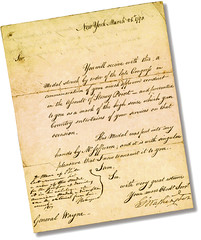 George Washington's letter of transmittal for Anthony Wayne's congressional gold medal, one of just fourteen medals authorized by Congress during the Revolution for presentation to specific individuals "to signalize and commemorate certain interesting events and Conspicuous Characters" (Journals of the Continental Congress 33: 422).
George Washington's letter of transmittal for Anthony Wayne's congressional gold medal, one of just fourteen medals authorized by Congress during the Revolution for presentation to specific individuals "to signalize and commemorate certain interesting events and Conspicuous Characters" (Journals of the Continental Congress 33: 422).
"You will receive with this, a Medal struck by order of the late Congress in commemoration of your much approved conduct in the Assault of Stoney Point—and presented to you as a mark of the high sense which your Country entertains of your services on that occasion.
"This Medal was put into my hands by Mr. Jefferson; and it is with singular pleasure that I now transmit it to you. In the postscript, Washington acknowledges "the receipt of your letter of the 1st February, which reached my hands a few days since."
Anthony Wayne's capture of the British garrison at Stony Point, New York, was one of the pivotal actions of the American Revolution. In late May 1779, British forces under General Henry Clinton began moving up the Hudson, hoping to draw George Washington into battle and possibly even to reach West Point, the "key to the American continent."
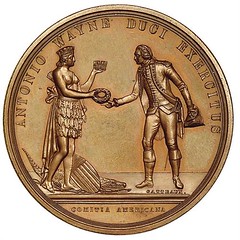
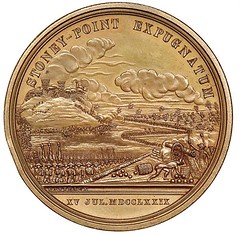
To read the complete lot description, see: LOT 179 WASHINGTON, GEORGE, AS FIRST PRESIDENT (www.sothebys.com/app/live/lot/LotDetail.jsp?lot_id=159590270)
To read the earlier E-Sylum article, see: JAMES MEASE, GEORGE WASHINGTON AND ANTHONY WAYNE'S STONEY POINT MEDAL (www.coinbooks.org/esylum_v13n03a06.html)
1975 STACK'S EXTORTIONIST TURNS HIMSELF IN
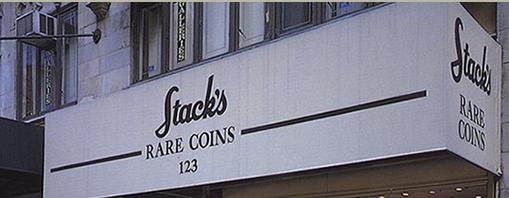
FOR more than three decades, Kurt Seidl worked as a chef, cook, bartender and, most recently, nanny. He wrote in his spare time, self-publishing collections of short stories under the name Gerald Conteh.
But Mr. Seidl was not only writing under a pen name; it turns out he was also living under one.
In 1975, Mr. Seidl was arrested on federal charges that he tried to extort $10,000 from a leading rare-coin dealership in Manhattan; the government said he sent a letter threatening to damage the firm's reputation if it did not pay.
He jumped bail and became a fugitive. Then, last November, while in the hospital with chest pains, Mr. Seidl, now 63, feared he was dying and decided to surrender to the authorities. Once out of the hospital, he dialed the city's 311 line from a pay phone. The police showed up and handed him over to the F.B.I. He was released on his own recognizance after a month in jail and is now living in a men's shelter on Manhattan's East Side, awaiting his next court hearing.
“I said to myself, well, let me just clean everything up,” explained Mr. Seidl. “I mean, it was a wrong thing I did long time ago.”
The United States attorney's office declined to comment on the case, and Robert M. Baum, Mr. Seidl's lawyer, would not let his client discuss the charges against him as well as some aspects of his time as a fugitive. And many details Mr. Seidl provided about his life could not be independently verified.
A Czech who also speaks Spanish and German, Mr. Seidl said in a series of recent interviews that he served in the Czechoslovak Army in the 1960s, including in counterintelligence, but fled after the 1968 Soviet invasion. “I have about 100 different ways how not to get caught,” he noted.
It was in 1975 that Mr. Seidl and two others were accused in the plot to extort $10,000 from the coin firm, Stack's, government court papers show. According to the filings, Mr. Seidl's letter threatened, “By donating this sum, you would be saving yourselves your families and business much consternation.”
Mr. Seidl said he had wanted to turn himself in sooner: “For years it bothered me.”
To read the complete article, see: Hiding in Plain Sight as Chef, Nanny, Author (www.nytimes.com/2010/04/11/nyregion/11fugitive.html)
ROBERT RHUE'S RAMBLINGS ON THE HOBBY IN THE 1960S
In response to your request for “musings from the 1950's and 60's, let me just share a few tidbits from my own experiences.
When I was putting together a type set in the early 60's I remember distinctly that most coins in Choice Uncirculated were around $20. The better varieties, for instance an Arrows Dime or an Arrows and Rays Quarter would run $35 or $40 in Choice Unc. And a super AU bust dollar set me back $200.
My twelve piece gold type set including the $3 gold piece, all Choice to Gem Uncs. Except for the Type II Gold dollar (which was only a slider) cost me $800 to put together. Five years later it was still worth only $800, so that's the first thing that I sold when I needed money for college.
Many people will remember the craze over BU rolls. 46-S nickels and quarters, 55-S pennies, 55-P, D and S dimes, and hundreds of other dates and denominations which had anything under the normal mintage, was highly sought after and driven to the moon pricewise. Reminds me a lot of the tech stock market of ten years ago. Anyway in 1964 the roll market crashed suddenly, and seemingly forever, since many if not most of those rolls can be bought today – 45 years later – for a small fraction of what they sold for in the early 60's.
I could ramble forever about memories from those days but will save some of those for another day.
THOUGHTS ON THE ANA CONVENTION CITY PLAN
I was surprised and disappointed to see that the ANA has committed to having its annual convention in the same city for four of the next five years and quite possibly beyond that period, too. While I understand the economic sense behind it, I can't help thinking that this is not entirely in keeping with the ANA's mission of bringing education to its members nationwide.
Decades ago the ANA convention was a just that, a gathering of members to share their knowledge, their collections and their fraternity. Though the old definition of our annual convention may be a thing of the past, this new move is too radical a departure from the organization's legacy. The inclusion of a dealer bourse dates only to the 1940s, and it has since become the tail that wags the dog. Only a year or two ago the ANA was planning to limit its annual convention to rotation between three core cities of proven bourse success, with the fourth year being reserved for some other location selected through more traditional criteria. That earlier plan was compromise enough with the ANA's historic legacy, but this latest decision seems like a complete sellout to commercialism.
On a more personal note, I've always found Rosemont to be among the dullest locations possible for a coin show of any size. Its immediate environment is overly sterile and way too far from a real city to provide the sense of adventure and fun that is typically part of an ANA convention. It's particularly annoying that this location is always referred to by convention promoters as "Chicago," when it so obviously is not that city or anything like it. "Chicagomont" is not suitable for anything but business, but then that seems to have been the overriding criterion is selecting it.
I've been to Rosemont, but have never been to Chicago. When I go to a convention, the main attraction is the convention itself and my fellow conventioneers. I must admit though, that I would miss the opportunity to explore a city, which is much more easily done for shows in New York, Baltimore and elsewhere.
Since many E-Sylum readers are knowledgeable about the history of the ANA and other national organizations, what do you think about what this decision means in the context of the club's history? Does history matter in this matter? And just why DID the AMERICAN Numismatic Association meet in Montreal, CANADA in 1909, anyway? What cities have historically been the best (or worst) for ANA conventions? -Editor
THE BOOK BAZARRE
BALDWINS TO OFFER STRICKLAND NEVILLE ROLFE COLLECTION
Caroline Newton of Baldwin's kindly forwarded images of some of the lots. Thanks! -Editor
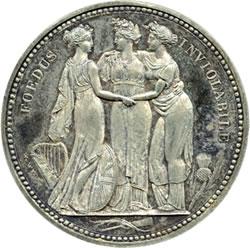 The Strickland Neville Rolfe collection is an amazingly conserved compilation of Ancient, British and World coins, tokens and Commemorative medals that has been untouched and out of circulation since 1852.
The Strickland Neville Rolfe collection is an amazingly conserved compilation of Ancient, British and World coins, tokens and Commemorative medals that has been untouched and out of circulation since 1852.
This numismatic collection has remained in the hands of Rolfe's descendents since his death and brilliantly represents a snapshot of the tastes and interests of an educated English country gentleman and divine of the Victorian era.
Strickland Charles Edward Neville Rolfe was born in 1789, eldest son of General Neville of the Royal Artillery. He assumed the name and arms of Rolfe by royal warrant in 1837, upon receiving the bequest of the estates at Heacham and Sedgeford, from Edmund Rolfe, a distant relative who had no issue.
The English coins from the collection span three centuries and include some key rarities, such as the pattern "Incorrupta" crown (lot 1405), one of only eighteen known to have been struck, and the "Three Graces" crown, one of the most important and majestic coins of the English series (lot 1406).
 Both the "Incorrupta" and the "Three Graces" crowns were struck by the renowned medallist, William Wyon. Wyon was born into a family of engravers and medallists and was the official Chief Engraver at the Royal Mint from 1828 until his death in 1851. He is well known amongst the numismatic community for the prolific amount of work he produced and for his artistic ability.
Both the "Incorrupta" and the "Three Graces" crowns were struck by the renowned medallist, William Wyon. Wyon was born into a family of engravers and medallists and was the official Chief Engraver at the Royal Mint from 1828 until his death in 1851. He is well known amongst the numismatic community for the prolific amount of work he produced and for his artistic ability.
Heavily influenced by relief sculpture he was an obvious advocate of Neo Classicist Vogue and was elected to the Royal Academy in 1838. It is astonishing that these coins were probably acquired soon after they were issued, which would account for their remarkable state of preservation.
There is an interesting selection of colonial coins in the collection including a number of East India Company coins from India and the Far East and St. Helena. It would be tempting to think that these were gifts from relatives who travelled overseas as we know that his second son, Henry Fawcett Rolfe, served in the Royal Navy, and died in the Far East.
There were Rolfes amongst the early settlers in America, notably as successful Virginia tobacco farmers and amongst the colonial coins are some superb early American coins. Most notably a pewter Continental Dollar (lot 1589), some stunningly preserved Rose Americana coppers (lots 1590-1593), and a magnificent Virginia halfpenny (lot 1594).
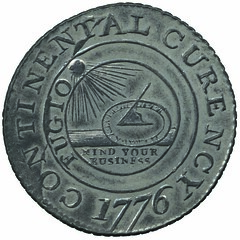
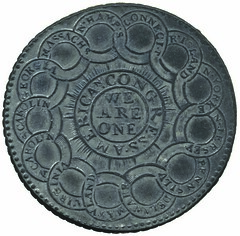
Perhaps the most extraordinary part of the collection is the series of Norfolk and Suffolk 17th Century tokens (lots 1474-1486). This is a substantial collection of 365 pieces, formed with obvious pride and dedication, as is confirmed by the meticulous notebook kept by Rolfe for the Norfolk part.

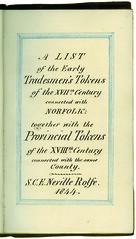
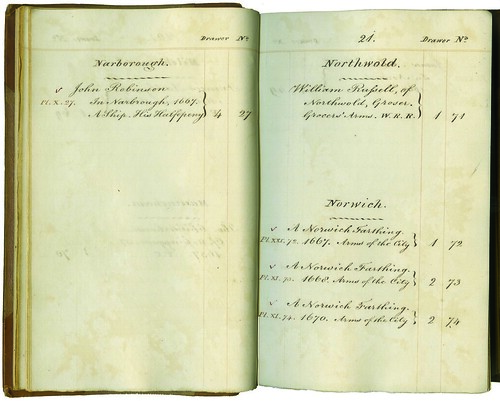
Whether he drew the astonishing pen and ink illustrations himself, or employed an artist to do them, we will never know. There are numerous rarities for both counties, many in remarkably high grade. The sobering thought is that this collection was unknown to the key researchers and cataloguers of this series in the 19th and 20th Centuries, William Boyne (1858), George Williamson (1889) and latterly, Michael Dickinson. The tokens listed in the notebook will be sold with it in one lot, to maintain the integrity of the collection.
The full catalogue for Baldwin's auction number 65 can be viewed online at www.baldwin.co.uk and the Rolfe Collection will be sold alongside The Michael Hall Collection of medallic art and the Bishop's Wood Hoard of Roman coins. The quality and diversity of the items offered over the two days is unsurpassable and is sure to attract a lot of international attention.
To read the complete article, see: The Strickland Neville Rolfe Collection in Baldwin Auction (www.coinnews.net/2010/04/07/the-strickland-neville-rolfe-collection-in-baldwin-auction/)
THE EDDYSTONE MEDAL
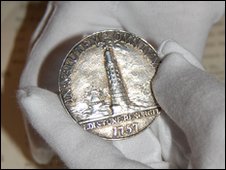 A rare medal which protected the bearer from being sent to serve at sea by Royal Navy press gangs has gone on display at a Cornish museum.
A rare medal which protected the bearer from being sent to serve at sea by Royal Navy press gangs has gone on display at a Cornish museum.
The Eddystone medals were given to 18th Century lighthouse builders to prove they were exempt from going to war.
They were commissioned in 1757 by John Smeaton, who oversaw the construction of the third Eddystone lighthouse, which now stands on Plymouth Hoe.
At the time Britain was fighting the French in North America.
Only a small number of the solid silver medals were made and they were given to men working on the new lighthouse as a sign that they were doing important and skilled work and were to be left alone by the press gangs.
The medal bears an inscription in Latin which relates to the destruction of the previous Eddystone Lighthouse in a fire.
It reads: "Consumed by fire December 6th 1755. Restored on the rock (it is hoped immovable) by virtue and the auspices of Robert Weston benefactor 1757. John Smeaton, Architect."
Sarah Riddle, curator at the National Maritime Museum Cornwall in Falmouth, said: "We believe that this medal is unique.
"It brings to life the torment of the press gangs, who would drag men to war during the 1700s."
The medal, which is normally on display in Plymouth, forms part of an exhibition on lighthouses at the museum.
To read the complete article, see: Rare lighthouse medal goes on display in Cornwall (news.bbc.co.uk/2/hi/uk_news/england/cornwall/8607811.stm)
SRI LANKA REPLACING TEN-RUPEE BANKNOTE WITH COINS
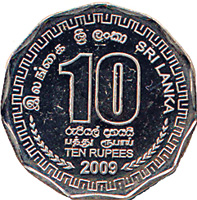
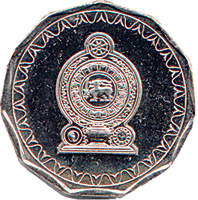
On April 5, 2010, the Central Bank of Sri Lanka (CBSL), issued a new Rs. 10 coin to replace the Rs. 10 currency note that will be withdrawn gradually from circulation. The coin minted in nickel-plated steel is in the shape of a eleven-sided polygon.
The obverse of the coin has the Armorial Ensign in the centre within a petal design along the periphery. The reverse has the face value of "10" in large numerals and in words in Sinhala, Tamil and English just below. They are flanked by ears of paddy on either side, above the year 2009, within a geometric design along the periphery.
The coin has a mean weight of 8.36 grams which is slightly more than the old Rs. 2 coin. With a diameter of 26.4 mm it is just one millimetre larger than the old Rs. 1 coin. It has a thickness of 2.1mm which was selected to be in-between the Rs. 2 coin which is 1.7 mm and the Rs. 5 coin at 2.7 mm. This is to allow good resolution at coin vending machines.
The 11-sided coin is like the Canadian dollar coin which is almost the same size at 26.5 mm but much lighter at 7 grams. By selecting a large odd number of sides it has a constant diameter and if rolled on a flat surface the centre of mass of the coin remains steady without wobbling up and down.
The justification of using coins rather than currency notes is because coins last longer than currency notes which need to be withdrawn from circulation when they get worn out. However those like bus conductors who handle large amounts of small currency prefer currency notes since they can be folded horizontally and wrapped around their fingers.
In 1940, just 70 years ago, 10 rupees was the value of a gold sovereign. The Sinhala term "Silima" for the British denomination shilling was 50 cents. With a gold sovereign now costing more than Rs. 30,000, it is ironic that at the time the 10-rupee coin is being introduced, its buying power is less than the half cent coin when it was demonetized in 1941.
This being the case, one is surprised why the CBSL continues to mint 25 cent and 50 cent coins which are rarely seen in general circulation.
The CBSL has a programme to collect coins from tills in major religious sites to keep them in circulation, but has little access to tills at homes. Bus fare and prices in shops no longer use fractional rupee value. It is clearly time that the CBSL made the rupee the lowest legal denomination.
In many countries like Japan where the currency denomination is worth about a rupee, the fractional denominations have been abandoned.
USA is debating whether to continue minting the one cent coin, and some European Union countries such as Finland and Netherlands produce them only for collector Mint sets. These are worth more than Rs. 1.
To read the complete article, see: A new 10-rupee coin for your pocket: Is there sense in minting cents, asks Kavan Ratnatunga (www.sundaytimes.lk/100411/Plus/plus_14.html)
THE COIN-THROWING POLTERGEIST
 A mechanic has claimed his garage is haunted by a ghost who likes to throw stones and coins at staff.
Nick White said the spectre has materialised several times in the building, which was originally a chapel and served as a makeshift mortuary during World War II.
A mechanic has claimed his garage is haunted by a ghost who likes to throw stones and coins at staff.
Nick White said the spectre has materialised several times in the building, which was originally a chapel and served as a makeshift mortuary during World War II.
He claimed it has moved around piles of tyres during the night while the garage, in Doncaster, South Yorkshire, was locked.
Two pre-war coins have also mysteriously turned up on the garage floor, and Mr White believes they were left by the ghosts, which has been seen wearing 1940s dress.
Mr White found the first of the old penny pieces, dated 1936 and bearing the image of George VI, when he arrived for work one day in February.
The second copper coin, dated 1938, was lying in almost the same spot when Mr White, 35, and one of his mechanics turned up at the depot in Doncaster last week.
Mr White said: ‘I took all the strange stories with a big pinch of salt when I bought the place. But I wouldn't like to say it's not true any more. There's no logical explanation for the two old pennies turning up like they did. I wish there was.
‘It's a little bit scary knowing that there's something happening while the place is locked up at night.'
Previous owner Nigel Lee once called in a clergyman to perform an exorcism.
To read the complete article, see: Haunted Garage: Coin-Throwing Poltergeist (www.ghosttheory.com/2010/04/06/haunted-garage-coin-throwing-poltergeist)
FEATURED WEB SITE: COLCHESTER TREASURE HUNTING
This week's Featured Web Site is suggested by Bill Snyder. Joe Connor's Colchester treasure hunting & metal detecting site has many interesting pages. Bill particularly recommends the page on "coin straightening" .


